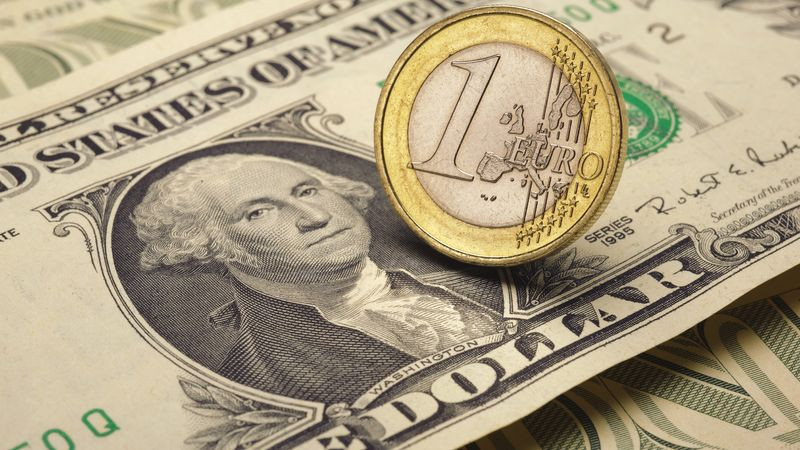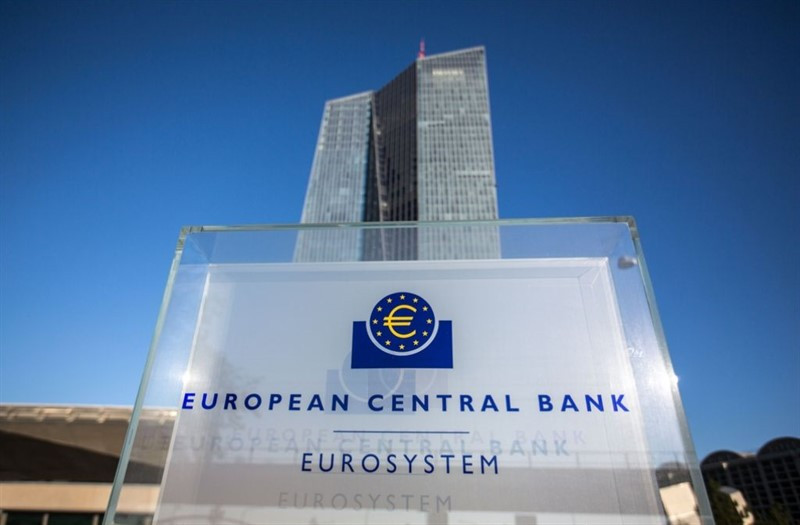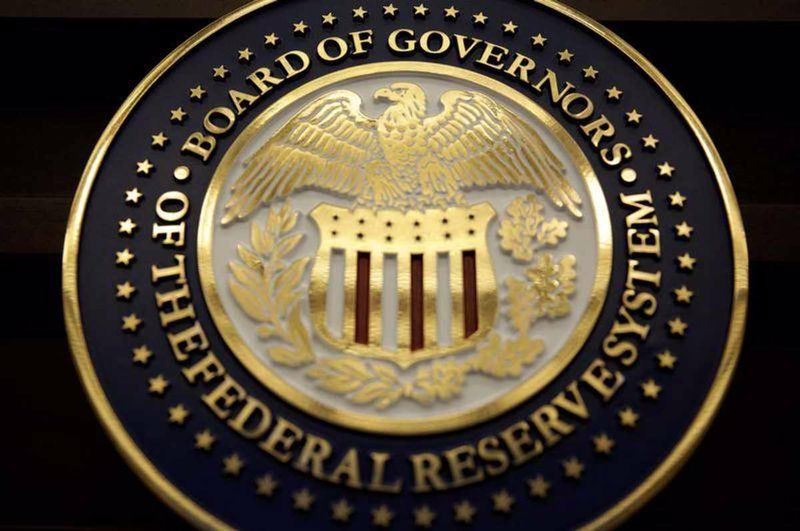
On Friday, risk assets led by US equities and the euro broke the rally and ended the week in negative territory.
Wall Street's positive mood was shattered after Snapchat's owner reported the slowest growth in sales as a public company, as well as a loss of $422 million for the quarter.
The report revived fears of a looming recession in the United States and came as a warning to other big tech companies that make a significant chunk of their advertising revenue.
Meanwhile, a release from S&P Global showed that business activity in America contracted in July for the first time in nearly two years. This only increased concerns about the slowdown in the national economy due to high inflation, rising interest rates and declining consumer confidence.
"Revenues are not as bad as expected, but they are deteriorating from what we have become accustomed to over the past few quarters," Crossmark Global Investments said.
The 106 S&P 500 companies reported earnings as of Friday morning, 75.5% better than analysts' expectations, according to Refinitiv data, down from 81% in the past four quarters.
"Economic data is getting weaker every time. This is a kind of confirmation of the fact that a recession is very likely within the next 12 months," said Verdence Capital Advisors.
That being said, experts note that Snapchat has always had more trouble posting earnings than other social networks, and the broader impact may not be too great.
Despite Friday's losses, all three of Wall Street's major indicators have just recorded their best weekly advance in a month. In particular, the S&P 500 rose 2.4%.
Meanwhile, the euro posted its best week since May, despite losing some of its weekly gains in Friday's session.As a result of the past five-day period, the single currency has risen in price by more than 1% against its US counterpart.
The euro became the star of the foreign exchange market last week as the attention of traders was riveted to the European Central Bank.
Investors were wrestling with how much the central bank would raise rates and eagerly awaiting details on a new anti-fragmentation tool.

The EUR/USD jumped to two-week highs (around 1.0280) on Thursday after the ECB increased borrowing costs in a larger-than-expected 50 basis point increment.
In addition, the central bank announced the creation of a new mechanism - the transmission protection instrument (TPI), aimed at reducing the yield of bonds of peripheral countries.
Investors weren't particularly impressed with the tool, though, and many were concerned about the lack of details and terms that could make it difficult for countries like Italy to use it.
Already on Thursday, the euro returned some of the points gained after the announcement of the ECB's verdict on monetary policy, and finished in the region of $1.0228.
On Friday, the EUR/USD pair continued to retreat from two-week highs. It sank to local lows in the 1.0130 area after S&P Global's composite eurozone purchasing managers' index fell to 49.4 in July from 52 in June.
Commenting on the report, S&P Global said the currency bloc's economy looks set to contract in the third quarter as business activity began to ease in July, with forecasts hinting for the worst in the coming months.
The single currency was able to minimize losses after data from S&P Global for the US showed that activity in the country's key services sector may have fallen even faster than in Europe's manufacturing sector.
As a result, the currency market wondered if the eurozone economy had really lagged that far behind its US counterpart in the first month of the third quarter.
This led the euro to recover slightly against the dollar ahead of the weekend, but fell almost 0.18% on the day to $1.0210.
At the start of the new week, the EUR/USD pair continued to trade unsteadily in the range of 1.0100-1.0300.
It is assumed that the pair will maintain a consolidating mood, at least until the announcement of the FOMC verdict on monetary policy on Wednesday.

Experts generally expect that the US central bank will raise its key interest rate by 75 basis points to 2.25-2.5%, but the market also does not rule out the possibility of raising it by 100 bp at once.
The dollar could trade in a wide range this week, CBA strategists say.
In their opinion, the Fed's rate hike by 100 bp will cause a jump in the USD rate.
However, even such a step by the central bank may not push the greenback to rise, but to it to fall on profit taking according to the principle "buy on rumors - sell on facts".
This will happen if the Fed announces that the further trajectory of the interest rate hike will depend on the incoming data.
Thus, the FOMC's July meeting may be the defining moment for the markets in this tumultuous month.
At the same time, the euro against the dollar will also be sensitive to eurozone inflation for July and GDP data for the second quarter that will be released on Friday, which may affect expectations regarding the ECB's interest rate hike in September and beyond.
Expert consensus suggests that the eurozone economy expanded by 0.2% in the last quarter.
Meanwhile, annual inflation in the region is expected to rise from 8.6% to 8.7% in July.
Wells Fargo specialists point out that inflation in the eurozone remains quite high, and inflationary risks are rather alarming. This, they say, is in favor of the ECB being able to continue with more vigorous rate hikes.
"We believe that the July increase will be followed by another 50 bp increase in the deposit rate at the September meeting of the ECB," they said.
"A larger-than-expected rate hike could be the start of a more aggressive policy as the ECB stopped issuing forward guidance," said strategists Franklin Templeton.
According to Berenberg economists, the ECB's flexible approach means that a possible 50 bp rate hike in September is likely to be followed by smaller steps later this year.
"But an increase of 25 bp in September is also possible. A 75 bp move also cannot be completely ruled out," they said.
The notable gains in the dollar against the euro over the past year owe much to the assumption that the Fed has more room to raise rates than the ECB. But the change in tone of the central bankers in Frankfurt am Main last week could now make a big difference to the EUR/USD exchange rate.
They may well have heeded the advice of the Bank for International Settlements, which last month urged all members to act quickly and decisively to nip inflation in the bud.

ECB President Christine Lagarde said the central bank will raise interest rates until inflation returns to its 2% target.
"Raising the rate will be just the next step on the way to roll out special measures. We will raise rates for as long as necessary to bring inflation down to our target over the medium term," she said.
Apparently, Lagarde and her colleagues fear that the Fed's aggressive stance will increase import inflation in prices for energy resources and food products in dollars and cause even more damage to the budgets of households and businesses in the EU. Therefore, they undertook to resolutely catch up.
"Higher inflationary pressures are also caused by the depreciation of the euro," Lagarde said at her press conference last Thursday.
Large speculators like hedge funds have increased their net short positions in euros to a record high since mid-February, according to the latest data from the US Commodity Futures Trading Commission (CFTC). This means that the EUR/USD short squeeze may still be ahead. And such a moment could come as early as this week if the Fed leaves the dollar in limbo on Wednesday, and the single currency is supported by European data on Friday.
The key pivot point is 1.0230, followed by last week's post-ECB high at 1.0275-1.0280 and 1.0300. A breakthrough above will serve as a new trigger for the bulls and open the way for additional growth. Then EUR/USD could target 1.0400.
On the other hand, 1.0130 (Friday's low) is protecting the pair from falling to 1.0100. A solid break below would indicate that the corrective bounce has run out and leave the pair vulnerable to a retest of parity. Then multi-year lows around 0.9950 may come into play.





















